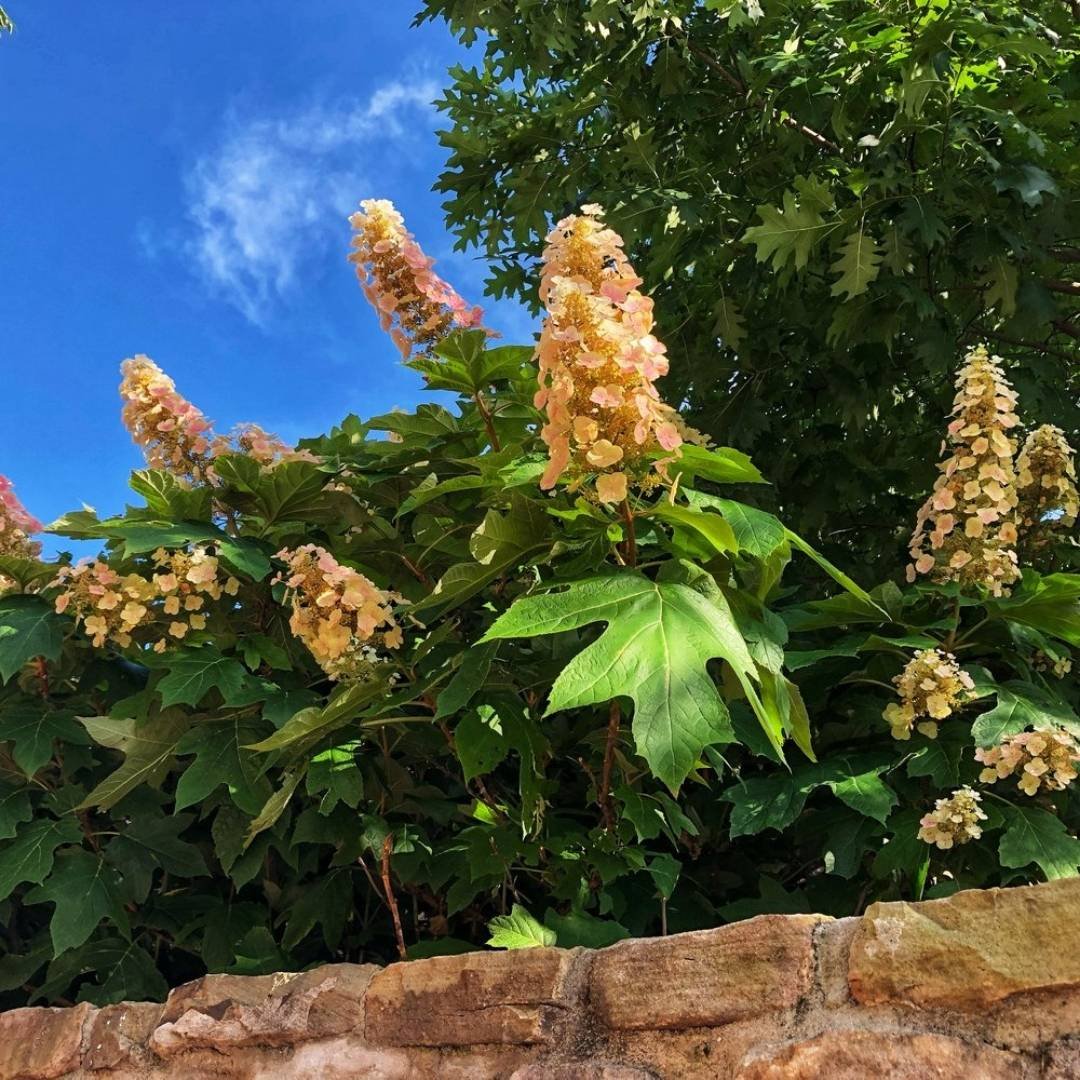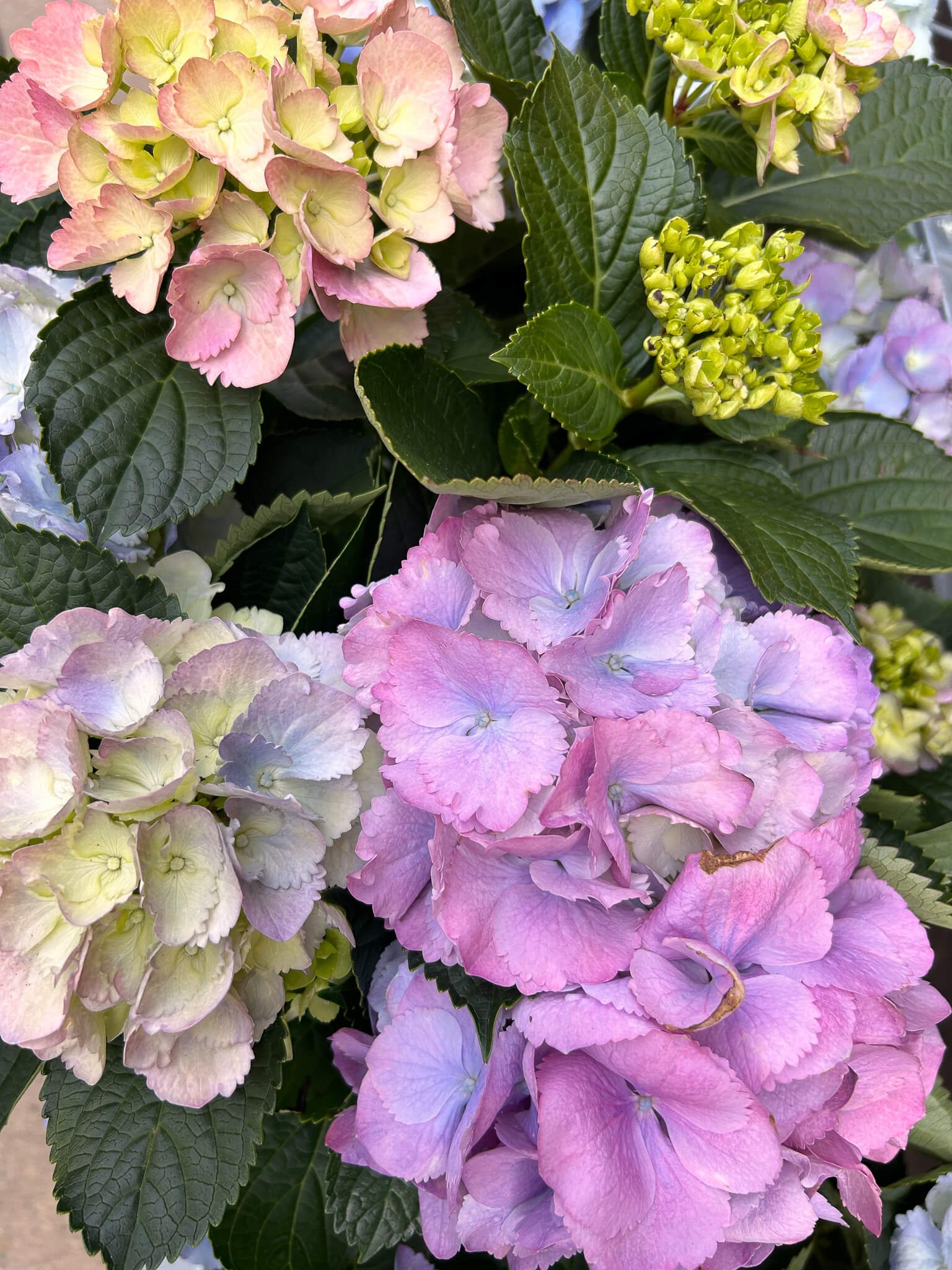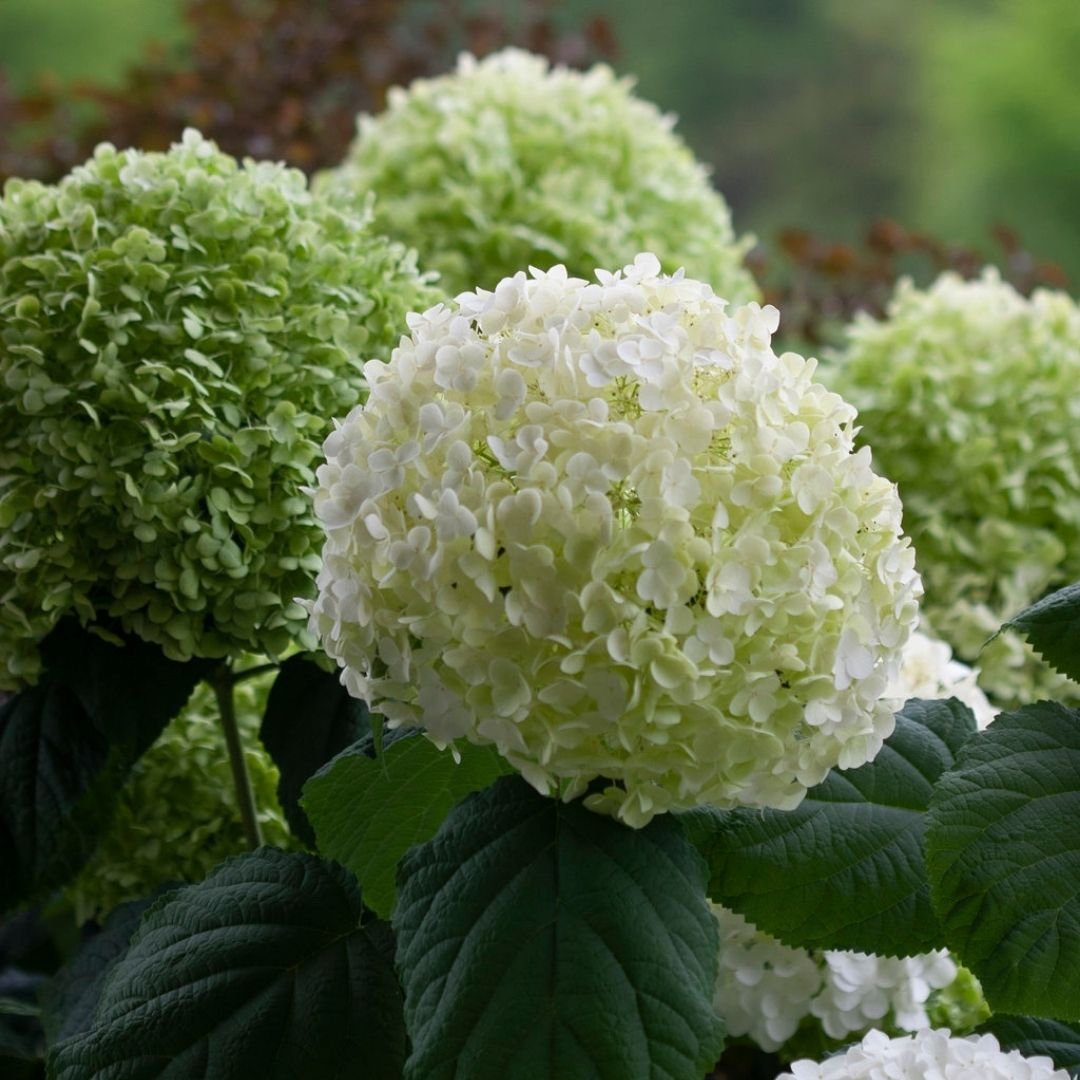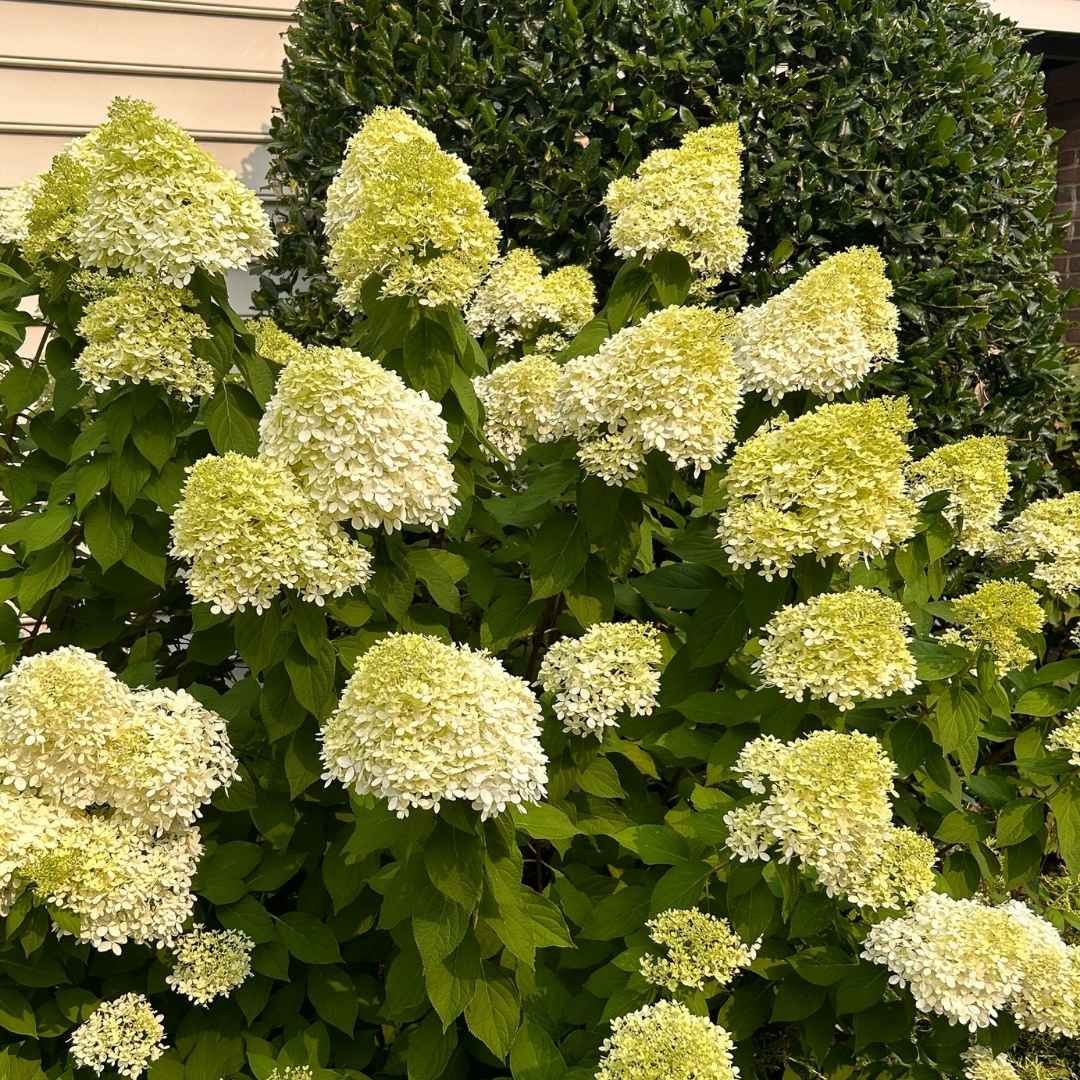Endless Summer® The Original Reblooming Hydrangea
Cover image Courtesy of Bailey Nurseries
This frost-resistant hydrangea flowers repeatedly throughout the growing season.
Endless Summer® The Original Reblooming Hydrangea (Hydrangea macrophylla ‘Bailmer’) is a cultivated variety of the bigleaf hydrangea, a deciduous shrub from Asia belonging to the Hydrangeaceae family.
The Original changed the bigleaf hydrangea world forever, due to its ability to bloom on both old and new wood and flower repeatedly from spring through fall despite cold winters and unpredictable spring freezes.
In the 1980s, The Original was discovered growing in the Minnesota yard of a fifth-grade teacher, where it stood apart for its propensity to bloom despite the harsh winter weather.
Today, The Original is one of the most popular shrubs in the entire gardening industry, readily available at both big box retailers and small local nurseries.
The Original hydrangea has large, showy mophead flowers reblooming on the plant from late spring until early fall.
Flower color can vary from steel blue to soft pink, depending on the soil pH.
The Original is a moderately fast-growing hydrangea, adding up to 24 inches of growth per year and eventually reaching 3-5 feet in height and width.
The large mophead flowers of Endless Summer® The Original Reblooming Hydrangea. Image courtesy of Bailey Nurseries.
The Original grows in zones 4-9, and it prefers part shade, shelter from the hot afternoon sun, and rich, well-draining soil.
Deer will eat hydrangea flower buds and leaves, especially the tender young growth.
If you would like to grow a flowering shrub that deer tend to leave alone, try Ruby Spice summersweet clethra as a deer resistant alternative to the bigleaf hydrangea.
What is a Reblooming Hydrangea?
A reblooming hydrangea blooms on both old and new wood, giving it the ability to produce flowers repeatedly throughout the growing season.
The Original hydrangea produces its first flush of blooms from buds that were set in the previous year.
After a short break, subsequent flowers emerge later in the summer from buds that form on the current season’s growth.
Reblooming hydrangeas are also called remontant hydrangeas.
How to Plant and Grow The Original Reblooming Hydrangea
Planting: The best time of year to plant The Original hydrangea is in the spring or fall, giving the roots time to establish before the onset of extreme hot or cold weather. Water deeply immediately after planting.
Location: Choose a location with well-drained soil that is rich in organic matter. The Original prefers soil that retains moisture but does not become waterlogged. Select a spot with partial shade and protection from the intense afternoon sun.
Soil: Amend the soil with organic matter, such as compost, shredded leaves, or Leaf-gro® to improve drainage and soil fertility. If you would like The Original to bloom specifically pink or blue, consider getting a soil test and adding either sulfur or lime to the soil. Add sulfur for blue flowers and lime for pink blooms.
Mulch: Apply a layer of organic mulch around the base of the plant to retain soil moisture, regulate temperature, and suppress weeds. Make sure the mulch does not touch the base of the plant.
Watering: Keep the soil consistently moist but not waterlogged, especially during periods of drought. Deep watering is preferable to encourage the development of a strong root system (Are you in a drought? Check the U.S. Drought Monitor).
Fertilization: Hydrangeas typically do not need fertilization when they are given the rich, fertile soil they prefer. Each spring, spread a layer of compost, shredded leaves or Leaf-gro® around the base of your hydrangea, being careful to keep away from the base of the shrub.
Pruning: The Original hydrangea requires little to no pruning - if you prune too much, you risk cutting off buds that will eventually become flowers. Cut out dead or damaged branches as needed.
Pest and Diseases: The Original hydrangeas are prone to powdery mildew and cercospora leaf spot. Ensure good air circulation around your plants to minimize the risk of disease, and practice good watering habits (see “How to Water your Plants” to brush up on your watering skills).
Does The Original Reblooming Hydrangea Like Sun or Shade?
The Original thrives in partial shade and likes to receive 2-4 hours of direct sunlight per day.
While it can tolerate more sun, The Original prefers dappled or filtered light, with protection from the intense hot afternoon sun.
In hot climates, providing The Original hydrangea with morning sun and afternoon shade can help prevent flowers and leaves from wilting and scorching.
In cooler regions, they may tolerate more sun, but protection from harsh afternoon sunlight is still recommended.
Planting Companions for The Original Reblooming Hydrangea
Feeling inspired to plant The Original hydrangea in your garden? Here are some ideas for planting companions - all favor the same partial shade conditions and moist, rich, well-draining soil that bigleaf hydrangeas love:
NewGen Independence® Boxwood (Buxus NewGen Independence® ‘SB 108’): The small evergreen leaves and structured shape of boxwoods are the perfect foil for the larger leaves and loose form of the bigleaf hydrangea. NewGen Independence® has a rounded habit and improved resistance to boxwood leafminer.
Cavatine Japanese Andromeda (Pieris japonica ‘Cavatine’): Striking evergreen leaves and delicate, bell-shaped white flowers contrast nicely with the large leaves of the hydrangea.
Delaware Valley White Azalea (Rhododendron ‘Delaware Valley White’): The white flowers and dark green foliage of this evergreen azalea won’t clash with the blue or pink flowers of The Original.
Tater Tot® Arborvitae (Thuja occidentalis 'SMNTOBABA’ Tater Tot®): A row of these petite, 12-24 inch high globe-shaped evergreens can be planted in front of a row of The Original hydrangeas, creating a pleasing textural contrast.
Astilbe (Astilbe species.): The fine textured foliage and spiky summer flowers of astilbe are the perfect partner for The Original. White varieties like ‘Deutschland’ look particularly nice.
Golden Variegated Hakone Grass (Hakonechloa macra ‘Aureola’): Striking, fine-textured foliage contrasts nicely with the large leaves and globe-shaped flowers of The Original.
Japanese Painted Fern (Athyrium niponicum 'Pictum'): Dramatic blue-green-silver foliage, a short stature and spreading form make this a great choice for planting next to The Original hydrangea.
Garden Ideas for The Original Reblooming Hydrangea
Foundation Planting: Plant The Original along side the foundation of your house. Its lush green foliage and colorful blooms will enhance the curb appeal of your home.
Mixed Borders: Create a mixed border planting by combining The Original with other complementary perennials, ornamental grasses, and evergreen shrubs for four seasons of visual appeal.
Mass Planting: Plant The Original hydrangea in groupings to create a mass of color. This approach works well in large garden beds or alongside pathways and fences, providing a striking visual impact.
Woodland Garden: The dappled shade underneath the canopy of tall trees is an ideal spot for The Original hydrangea. Combine with other partial-shade loving plants like camellias, Japanese andromeda, azaleas, and rhododendrons.
Accent Planting: Use The Original as a focal point in the landscape. Plant strategically to draw attention to specific areas of the garden, like entryways, water features, pathways, or seating areas.
Vintage Cottage Garden: For a charming, informal look, plant The Original hydrangea alongside old-fashioned cottage garden favorites like foxgloves, garden phlox, hollyhocks, catmint, hibiscus, and roses.
Endless Summer® The Original is great for planting in front of the house or along foundations. Image courtesy of Bailey Nurseries.
How to Change the Color of The Original Reblooming Hydrangea
You can change the color of your hydrangea blooms by manipulating the pH of the soil.
The pH level affects the availability of aluminum in the soil, in turn influencing the color of hydrangea flowers.
Adding aluminum sulfate, garden sulfur, or organic matter makes the soil more acidic and will turn the color of The Original hydrangea blooms an intense steel blue.
In neutral soils, both blue and pink flowers may be present on the plant at the same time.
Adding garden lime raises the soil pH and turns blooms pink. Be patient - it can take months for change to become evident!
Endless Summer® The Original Rebloom Hydrangea flowers turn pink in alkaline soils. Image courtesy of Bailey Nurseries.
Is The Original Reblooming Hydrangea Poisonous to Dogs?
Endless Summer® The Original Reblooming hydrangeas (Hydrangea macrophylla ‘Bailmer’) contain compounds that can be toxic to dogs if ingested, specifically cyanogenic glycosides.
These compounds can release cyanide when broken down in the digestive system.
However, the level of toxins in bigleaf hydrangeas are relatively low, and instances of dogs getting poisoned by consuming these plants are rare.
While the risk of severe poisoning is low, it’s important to monitor your dog's behavior in outdoor spaces.
If you suspect your dog has ingested a toxic plant, seek immediate veterinary care or contact the Pet Poison Hotline.
Read “Which Plants are Toxic to Dogs” for more information on plants poisonous to dogs.























Bring drama to your garden with dark foliage and mophead blooms!